The photograph below shows minced, diced and chopped onions. Minced (on the left) is the smallest cut. diced (in the middle) is a bit bigger, and chopped (on the right) which is cut, at most, into about ¼ inch chunks.
When it comes to chopping an onion or any vegetables, choose a knife that you are comfortable holding. As long as it’s sharp, it really comes down to what knife you feel you can control well.
So, let me show you how to chop an onion.
This is the root end of an onion.
Leave the root end intact. It will actually help to make cutting the onion easier.
Cut off the top of the onion (the other end.)
Peel off the outside skin (the dry, papery layer.)
Sometimes you end up removing the first layer of onion as well which is ok.
Cut the onion in half from the top end to base. Place the cut side down on the cutting board.
Always hold the onion with bent fingers while slicing and chopping. This allows you to use your knuckles as a guide against the side of the knife and not the tips of your fingers under the knife. It will feel pretty awkward at first but it’s the only safe way to hold the onion!
For chopped onions, with the knife tip pointed towards the root, slice the onion to within 1/2 inch of the base. Make about 1/4 inch parallel cuts.
Now cut perpendicular to the slices you just made.
Oh look! Chopped onions!
“Diced” onions are nothing more than onions cut into smaller pieces. For diced onions do the exact same thing, only with smaller cuts. Minced is even smaller!
If the onions need to be chopped finer you can run your knife through them in a rocking motion. Be sure to hold down the tip of the knife, otherwise the onions are going to go flying around the room.
If cutting onions makes you cry, try putting your onion in the freezer for about 20 minutes before cutting it.
Cheers!
Kathy
If you are new to startcooking, or are a regular visitor here, please consider subscribing for free.



























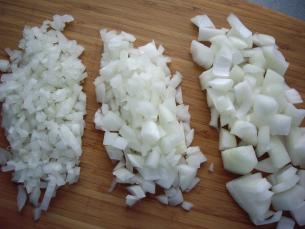
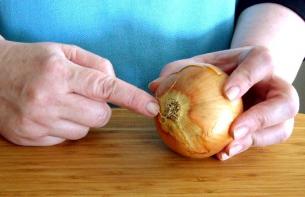
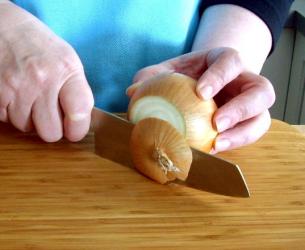
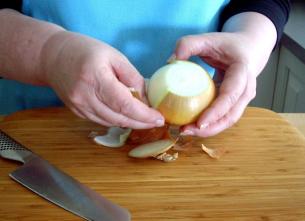
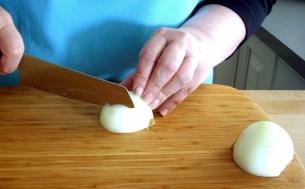

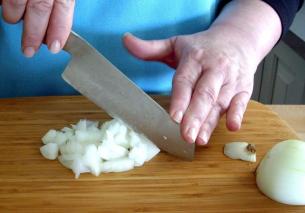













Dyelry Labbate said:
Belive or not Kathy, I am trying to get kristen to add your website to her favorites so she can start some place. Your instructionns and know hows are just fantastic. Thanks for all the great info.